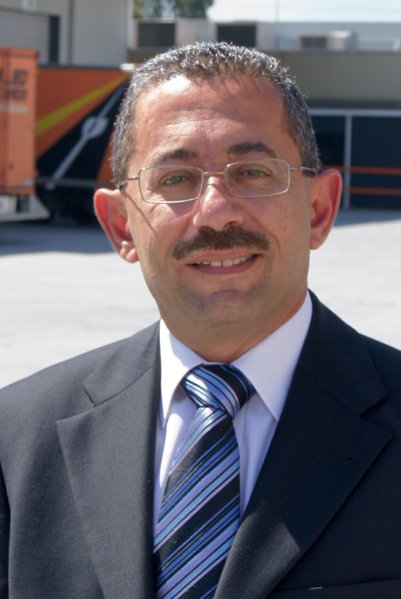Virtualisation has a winning impact
With a long career in IT spanning years at vendors such as Digital Equipment Corporation (DEC) and Tandem as well as working at the helm of IT operations for large corporations such as Corning, Ziad Sukkar*, CIO of SIRVA in Asia-Pacific, is most excited about virtualisation technology.
SIRVA has well-known brands such as Allied Pickfords, which is one of the world’s largest removal companies with over 45 locations across Australia alone. Sukkar also has responsibility for IT in New Zealand, Asia and the Middle East. Virtualisation, without doubt, is the key to Sukkar’s success at SIRVA.
He has a double degree from the London University in mathematics and computer science but confesses that he always had an interest in computing and did not ever contemplate being a teacher.
When asked what technology has made the biggest impact during his IT career he had not hesitation in saying, “virtualisation”.
“It’s made a huge difference. We have been doing it for years as we are early adopters. We had used one of Citrix’s competitor’s virtualisation technologies but I was not convinced that the investment paid off. In fact, the cost of using this software was very comparable with running the physical servers as the licences and annual maintenance were expensive.
“When the company moved to Citrix it was simple to implement and the licences were virtually free as Citrix were keen to promote the product. It was an obvious step to be early adopters of Citrix virtualisation as we had already utilised their products over the years and we trusted them.”
When Sukkar joined SIRVA in 2003, the company had a distributed computing model with 45 locations in Australia with some being in quite remote regional areas. It was a hard environment to manage with geographically dispersed servers running multiple applications and data bases, so selecting a thin client partner was a logical choice.
“Now it seems organisations are all consolidating their IT resources and leveraging so much out of the consolidation, such as reduced licensing and infrastructure costs, reduced annual hardware and software maintenance and utility costs which simplifies IT operational management. We don’t have to worry, for example, about whether the backups have been run in the regional centres. Centralised computing enables us to rollout new applications as well as upgrades easily and deliver these to our user community using an extensive Telstra WAN which connects all our offices and franchises. Therefore everyone is updated at the same time.
“We are able to do all of this with a team of eight people covering ANZ, Asia and the Middle East which cover four time zones. We have a disaster recovery site at Telstra’s Melbourne Internet Data Centre (IDC) but we haven’t had to utilise it yet except for regular testing purposes. We have made sure we have built in redundancy for all our systems at our corporate HQ at Dandenong.
“If other CIOs are thinking of virtualising I recommend that they do their ROI properly, they need to really understand their applications’ requirements in terms of server resources like I/O rates, CPUs and memory but they must also consider at the same time their current costs and compare these with their future costs under a virtualised environment.
“Virtualisation has allowed us to do other things like reduce the IT footprint which, in turn, reduces energy consumption and enables us to pursue the goal of green IT. We have also implemented power saving on all our network switches according to time of use policies. We are happy with our achievements in this area.
“We at SIRVA continue to explore opportunities to increase IT applications and network performance and reduce costs. We have recently started deploying Citrix branch repeaters, leveraging the network optimisation technology to increase IT productivity but at the same time reducing traffic across the network and costs by eliminating the need for bandwidth upgrades.”
When asked about cloud computing, Sukkar said, “I love the concept but I am a bit sceptical. It will suit a lot of people like small businesses and people who run out-of-the-box applications but it isn’t so simple for running your customised or mission-critical business applications.
“Never the less I am looking at it and evaluating it but not for business critical applications.
“In our roadmap we are considering migrating to 64-bit technology and will look at moving some of our applications to 64-bit which will further reduce our costs and allow us to grow and expand without adding any infrastructure.”
And, when Sukkar is not thinking about virtualisation, he relaxes by road cycling and loves socialising with friends, eating out and going to the movies and theatre.
 *Ziad Sukkar is the CIO of SIRVA in Asia-Pacific which is the parent company of brands including Allied Pickfords. He has worked for SIRVA for the last eight years and had a long career in IT both with vendors and large enterprises.
*Ziad Sukkar is the CIO of SIRVA in Asia-Pacific which is the parent company of brands including Allied Pickfords. He has worked for SIRVA for the last eight years and had a long career in IT both with vendors and large enterprises.
AI's next leap: expect more enterprise integration with purpose and ROI
The coming year marks a new phase in AI maturity, one that won't be defined by flashy AI...
The cloud’s real security crisis in Australia
The cloud promised to make security simpler, but instead it has becomne the greatest area of...
Cybersecurity KPIs still reactive rather than forward-looking: report
According to Tenable, the C-suite's rush to AI blinds leadership to critical security...



